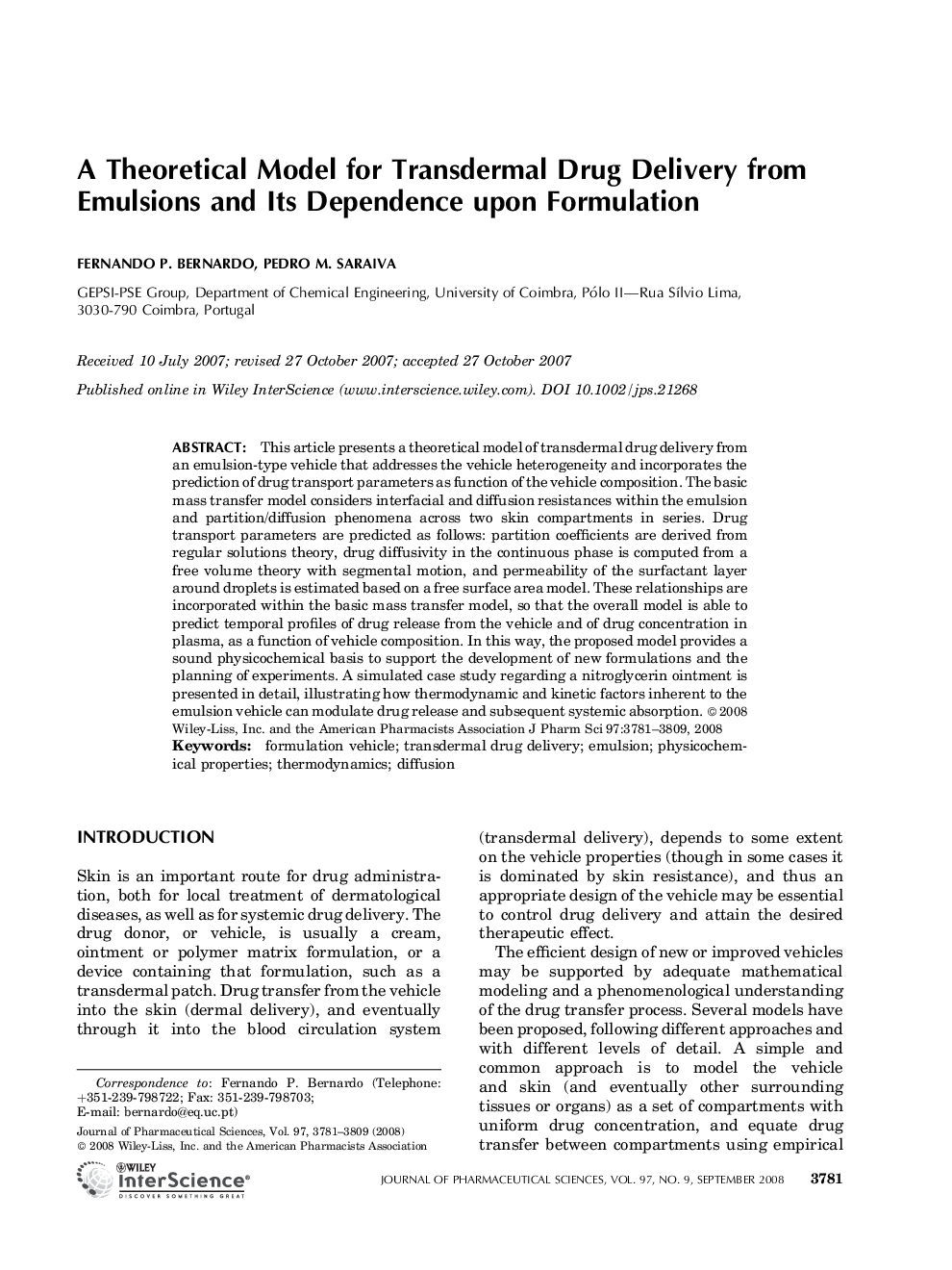| Article ID | Journal | Published Year | Pages | File Type |
|---|---|---|---|---|
| 2487257 | Journal of Pharmaceutical Sciences | 2008 | 29 Pages |
Abstract
This article presents a theoretical model of transdermal drug delivery from an emulsion-type vehicle that addresses the vehicle heterogeneity and incorporates the prediction of drug transport parameters as function of the vehicle composition. The basic mass transfer model considers interfacial and diffusion resistances within the emulsion and partition/diffusion phenomena across two skin compartments in series. Drug transport parameters are predicted as follows: partition coefficients are derived from regular solutions theory, drug diffusivity in the continuous phase is computed from a free volume theory with segmental motion, and permeability of the surfactant layer around droplets is estimated based on a free surface area model. These relationships are incorporated within the basic mass transfer model, so that the overall model is able to predict temporal profiles of drug release from the vehicle and of drug concentration in plasma, as a function of vehicle composition. In this way, the proposed model provides a sound physicochemical basis to support the development of new formulations and the planning of experiments. A simulated case study regarding a nitroglycerin ointment is presented in detail, illustrating how thermodynamic and kinetic factors inherent to the emulsion vehicle can modulate drug release and subsequent systemic absorption.
Keywords
Related Topics
Health Sciences
Pharmacology, Toxicology and Pharmaceutical Science
Drug Discovery
Authors
Fernando P. Bernardo, Pedro M. Saraiva,
